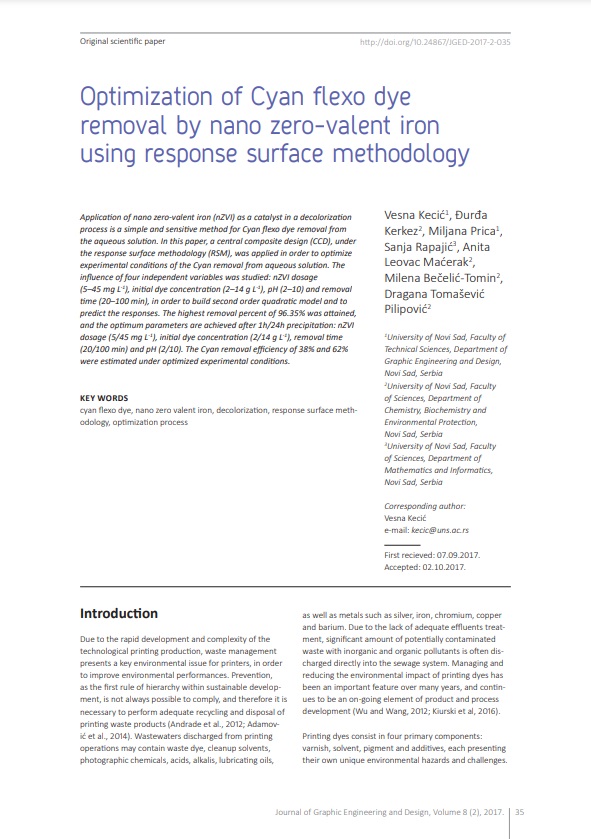Optimization of Cyan flexo dye removal by nano zero-valent iron using response surface methodology

Published 2017-12-01
abstract views: 253 // Full text article (PDF): 149
Keywords
- cyan flexo dye,
- nano zero valent iron,
- decolorization,
- response surface methodology,
- optimization process
How to Cite
Copyright (c) 2017 © 2017 Authors. Published by the University of Novi Sad, Faculty of Technical Sciences, Department of Graphic Engineering and Design. This article is an open access article distributed under the terms and conditions of the Creative Commons Attribution license 3.0 Serbia.

This work is licensed under a Creative Commons Attribution 3.0 Unported License.
Abstract
-
Application of nano zero-valent iron (nZVI) as a catalyst in a decolorization process is a simple and sensitive method for Cyan flexo dye removal from the aqueous solution. In this paper, a central composite design (CCD), under the response surface methodology (RSM), was applied in order to optimize experimental conditions of the Cyan removal from aqueous solution. The influence of four independent variables was studied: nZVI dosage (5–45 mg L-1), initial dye concentration (2–14 g L-1), pH (2–10) and removal time (20–100 min), in order to build second order quadratic model and to predict the responses. The highest removal percent of 96.35% was attained, and the optimum parameters are achieved after 1h/24h precipitation: nZVI dosage (5/45 mg L-1), initial dye concentration (2/14 g L-1), removal time (20/100 min) and pH (2/10). The Cyan removal efficiency of 38% and 62% were estimated under optimized experimental conditions.

